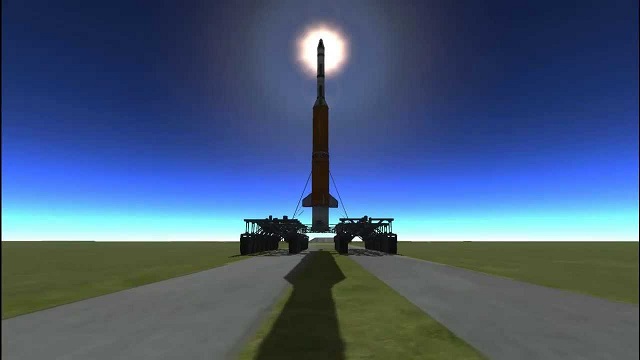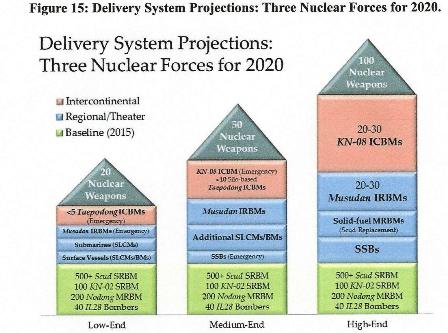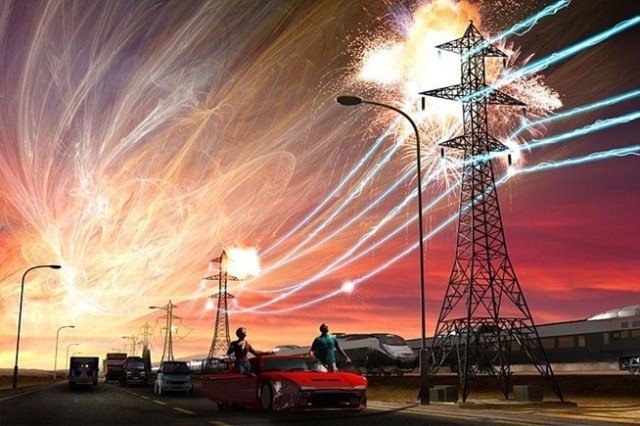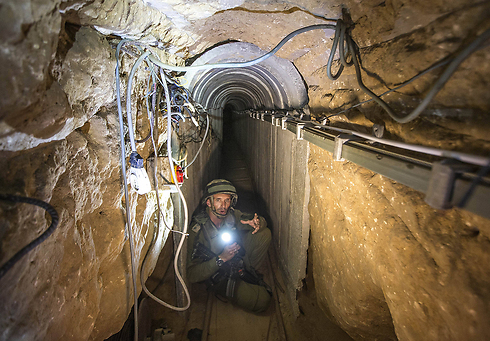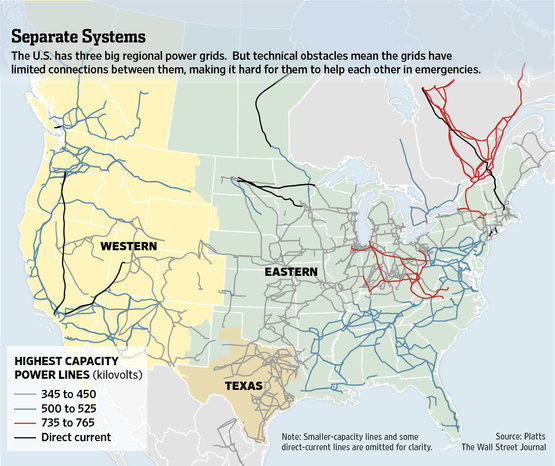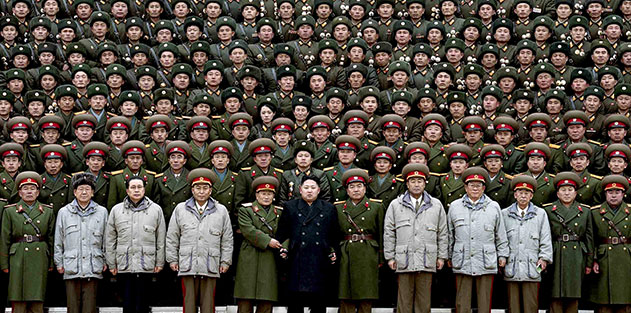Can the U.S. Defend Itself against North Korean and Iranian Nuclear ICBMs?
This weekend, Israel National News-Arutz Sheva published a thought provoking article reflecting a sea change in U.S. Anti-Missile Defense against North Korean and Iranian ICBM developments, “U.S. Admits N. Korea, Maybe Iran, Can Now Target it with EMP-Nukes.”
The center piece of the INN article was an April 7, 2015 briefing by U.S. Admiral Bill Gortney, Commander of North American Aerospace Defense Command (NORAD) and U.S. Northern Command (USNORTHCOM) the anti-missile command charged with the responsibility of protecting the nation against the ICBM threat. Admiral Gortney confirmed what my colleague Ilana Freedman and this writer, the Heritage Foundation and the U.S.-Korea Institute of the John Hopkins University, School for Advanced International Studies, maintained that North Korea and Iran have mastered the miniaturization of nuclear warheads and may be on the verge of operational ICBMs capable of hitting U.S. military targets in the Western Pacific and within a few years targets across the U.S., perhaps in a devastating EMP attack.
As long ago as August 2011, we discussed this in an NER article, “The Iranian Missile Threat.” In 2012, we participated in an awareness webinar sponsored by the Congressionally chartered EMP Commission that featured nuclear and intelligence experts. In 2013, we broached the question of whether Iranian missiles positioned in missile sites being prepared in the Paraguana Peninsula of ally Venezuela could reach Florida by 2015. In both March 2014 and in April 2015, this writer and Ilana Freedman raised the matter of North Korean and Iranian cooperative development and test of nuclear weapons including the development of MIRV warheads for ICBVMs.
At issue is whether Admiral Gortney’s briefing was the long awaiting admission by the Pentagon that this ICBM threat from rogue regimes North Korea and Iran is both real and compelling. However, the questions still remains, that with the effects of sequestration and the hollowing out of the anti-missile program whether this country is truly prepared to counter it.
Admiral Gortney’s Disturbing Revelations
The INN disclosed these warnings from Admiral Gortney:
That the Pentagon now believes North Korea has mastered the ability to miniaturize its nuclear bombs so they can be fitted onto their latest mobile KN-08 intercontinental ballistic missiles (ICBMs), which are capable of reaching the continental United States.
At the news conference, Adm. Gortney flatly stated, Pyongyang has “the ability to put a nuclear weapon on a KN-08 and shoot it at the homeland [the continental United States].” He expressed confidence that the U.S. could knock down such a missile if launched by North Korea or its ally, Iran.
He also admitted, however, that it is “very difficult” for the U.S. to counter the threat, because its intelligence is unable to follow the mobile ICBMs and give an efficient warning before they are launched.
The INN report drew attention to the KN-08 ICBM development and whether we can intercept it:
The KN-08 is a road-capable, highly mobile ICBM, which can be hidden anywhere throughout the North Korea and could be fired on a short-countdown virtually undetectable by American intelligence. As Adm. Gortney further explained about the North’s KN-08 ICBM, “It’s the relocatable [highly-mobile, can go anywhere – ML] target set that really impedes our ability to find, fix, and finish the [KN-08] threat. And as the [KN-08] targets move around and if we don’t have a persistent stare [i.e., the ability to monitor its location at all times – ML] and persistent [intelligence, surveillance, and reconnaissance] that we do not have over North Korea at this time, that relocatable nature makes it very difficult for us to be able to counter it.”
Despite Adm. Gortney’s concerns, he still believes that if a KN-08 was fired at the U.S. homeland, in the Admiral’s words – “Should one get airborne and come at us [the U.S. homeland], I’m confident we would be able to knock it down.”
Even if this is true, it is not clear if the U.S. ballistic defense could knock down an incoming North Korean ICBM in time, if the nuke is intended as an EMP weapon, which explodes soon after re-entering the atmosphere.
Watch Admiral Gortney’s Pentagon briefing:
The Heritage Foundation Raised Concern about U.S. South Korean Intelligence Assessments
In June 2014, the Washington, D.C. conservative think tank, The Heritage Foundation issued a report raising concern about whether U.S. and South Korean intelligence assessments about North Korean nuclear tipped ICBM developments, “Allies Should Confront Imminent North Korean Nuclear Threat.” The author of the Heritage report, Bruce Klingner is “Senior Research Fellow for Northeast Asia in The Heritage Foundation’s Asian Studies Center. Klingner’s analysis and writing about North Korea, South Korea, Japan and related issues are informed by his 20 years working at the Central Intelligence Agency and the Defense Intelligence Agency.” Klingner’s analysis found:
- Experts predominantly assess that North Korea has developed several nuclear devices, but not yet mastered the ability to miniaturize a warhead or deliver it via missile. U.S. and South Korean policymakers presume they still have several years to constrain North Korea’s nuclear threat.
- Yet available unclassified evidence indicates North Korea has likely already achieved warhead miniaturization, the ability to place nuclear weapons on its medium-range missiles, and a preliminary ability to reach the continental United States with a missile.
- The United States and its allies face a greater threat today than is widely construed.
- North Korea now claims that it can strike the United States and its allies with nuclear weapons. Pyongyang has declared it will never negotiate away its nuclear arsenal.
- Washington and Seoul need to augment missile defenses to better protect against Pyongyang’s more credible and deadly nuclear arsenal.
Against these findings, Klingner offered the following recommendations to protect the U.S. against this threat:
- Fund its defense commitment to Asia. While the Obama Administration has been stalwart in its rhetoric pledging an “Asia Pivot,” it has not provided the military budget necessary to honor fully American commitments to security in the Pacific. Massive defense budget cuts are already affecting U.S. capabilities in the region, increasing risk to allies, U.S. security and economic interests, and the safety of U.S. service personnel and American citizens living and working in the region.
- Improve U.S. homeland ballistic missile defense. The U.S. should accelerate deployment of additional ground-based midcourse defense interceptors in Alaska and California to prevent an emerging gap between North Korean ballistic missile capabilities and U.S. defenses.
- Accelerate development of advanced versions of the SM-3 interceptor for Aegis-capable ships, including restarting the SM-3 Block IIB program, which would give the Aegis system the ability to intercept long-range ballistic missiles.
- Restart the boost-phase ballistic missile defense programs. During the boost phase, a missile is at its slowest, has not yet deployed decoys, and is therefore most vulnerable and easily intercepted. The Obama Administration cancelled all such programs in its first term, including the Airborne Laser and the Kinetic Energy Interceptor.
- Restart the multiple kill vehicle program for ground-based interceptors to increase the probability of interception by only one interceptor, rather than requiring the launch of multiple interceptors.
- Improve and modernize U.S. space-based sensors, including the Space Tracking and Surveillance System. This is a critical capability for detecting missile launches and tracking their trajectory.
The U.S.-Korea Institute of the John Hopkins SAIS Projections of North Korea ICBM Threat
At approximately the same time as Admiral Gortney’s briefing in early April 2015, the JHU SAIS Korea – U.S. Institute released a definitive study on the Nuclear tipped North Korean Missile Threat, the latest assessment of the North Korea’s Nuclear Futures. Among its findings were:
North Korea’s current delivery systems consist of about 1,000 ballistic missiles and a small number of light bombers able to reach most targets in South Korea and Japan. This force is comparatively more advanced than most countries at a similar early stage in the development of their nuclear arsenals since ballistic missiles have played an important role in Pyongyang’s conventional military strategy for many years. As a result, the current force is more than able to accommodate any future growth in the North’s nuclear weapons arsenal, including a worst-case projection of 100 nuclear weapons by 2020.
The North’s regionally-focused delivery systems include: 1) the Nodong medium-range ballistic missile (MRBM), a mobile liquid-fueled missile with a range of 1,200-1,500 km and accurate enough to attack cities, ports and military bases; 2) a large stockpile of Scud ballistic missiles—also mobile and liquid-fueled—that could carry a nuclear payload 300-600 km; 3) the mobile, solid-fuel KN-02 Toksa short-range ballistic missile (SRBM), based on the old Soviet SS-21 SRBM that was able to carry nuclear, chemical and conventional warheads; and 4) up to 60 Il-28 light bombers built on a 1950s Soviet design.
The SAIS Korea Institute report identified current North Korean developments:
- The development of new road-mobile missiles with greater ranges—the Musudan intermediate-range ballistic missile (IRBM) and KN-08 intercontinental ballistic missile (ICBM)—that signal an intention to withstand preemption, provide more significant retaliatory options and to target American bases in Guam and the continental United States;
- An effort to develop short-range, sea-based, land-attack missiles that increase survivability, expand the threat to theater targets and complicate defense planning since mobile platforms can launch their weapons from any direction;
- The development of a larger space launch vehicle than the existing Unha SLV—along with the upgrading of the Sohae Satellite Launching Station to launch a new system—as part of what may be an effort to deploy longer-range ballistic missiles; and
- The development of solid-fuel rocket technology through enhancing the range of the KN-02 SRBM, which could yield greater mobility and survivability for future longer range solid-fuel missiles.
The JHU SAIS Korea-U.S. Institute report concluded:
The dangers posed by North Korea’s continuing effort to develop new nuclear delivery systems are clearly real, although more uncertain than nuclear weapons estimates, given the various technological hurdles Pyongyang will have to overcome in the future. Nevertheless, even if North Korea was severely limited in its ability to further develop a direct threat to the United States beyond probably a handful of ICBMs based on old Soviet technology, its existing inventory of approximately 1,000 missiles has sufficient reliability and range to cover most important targets in Northeast Asia. Moreover, the number of systems likely exceeds even the worst-case estimate for North Korea’s nuclear inventory in this study—that the North could field 100 nuclear weapons by 2020. In short, North Korea has already achieved a level of delivery system development that will allow it to establish itself as a small nuclear power.
Conclusions
These reports by the Heritage Foundation and the JHU SAIS Korea when coupled by U.S. Northern Command chief Admiral Gortney’s Pentagon briefing should raise questions by Congress in their quest this week to review and mark up the Senate Corker-Menendez legislation before the Senate Foreign Relations Committee. It is about the absence of and ability to obtain verification of Iran’s previous military developments whether in illicit clandestine locations in the Islamic Republic or the DPRK. Developments that we suggested in this writer’s and Ms. Freedman’s latest report lie beyond the capabilities of the UN IAEA, US CIA and DIA. Israel’s Operation Orchard in September 2007 demonstrated their invasive technical and HUMINT prowess in both identifying and taking out a North Korea plutonium reactor on the banks of the Euphrates River. Doing that in either or both North Korea and Iran would be a daunting task for Admiral Gortney’s Northern Command. Perhaps this is a matter for immediate attention for the Senate Armed Services Committee and its Chairman Sen. John McCain.
Watch this YouTube video of a March 26, 2015 presentation by Senator McCain at the Washington, D.C. – based Center for Strategic and International Studies on Military Priorities to determine if Defense against the North Korean-Iranian nuclear missile threat was addressed:
EDITORS NOTE: This column originally appeared in the New English Review.

